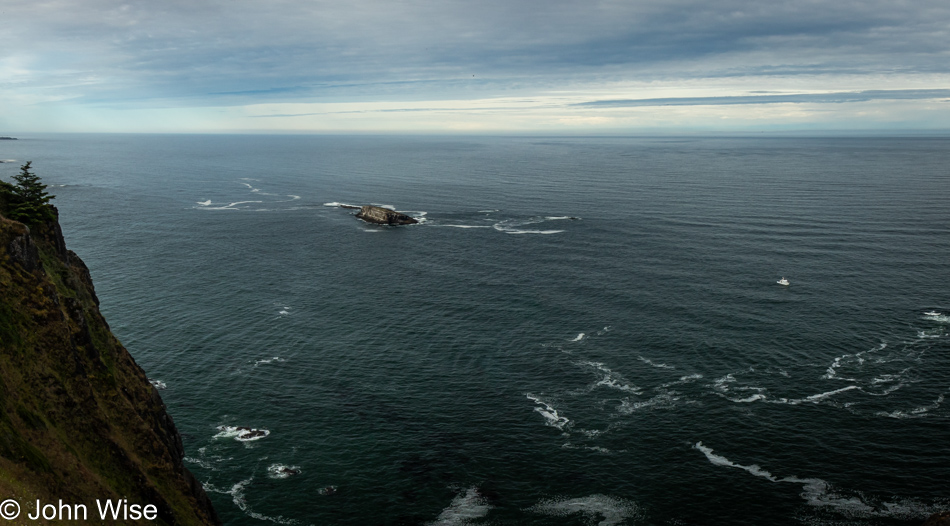
Sometimes, a mystery should remain so. We kept seeing a sign directing us to a historic marker on the side of the road, but only when we were driving north, so we’d often miss the small turnoff when we were wending our way south. This morning, we took our time, determined to stop at this mystery spot. The small road turned out to be an alternative way to Cape Foulweather, but this couldn’t be it; why wouldn’t the sign say such? Well, there’s a fork on that small road, would the historic point must be on it? Nope. Swinging around, we saw the sign again, except this time, we saw that it clearly said Cape Foulweather Historic Point. How’d we miss that so many times in the past weeks? [Because just after the sign for Cape Foulweather there was another sign for “historic point” without the additional info, leading me to believe (incorrectly) that there was a second one – Caroline]
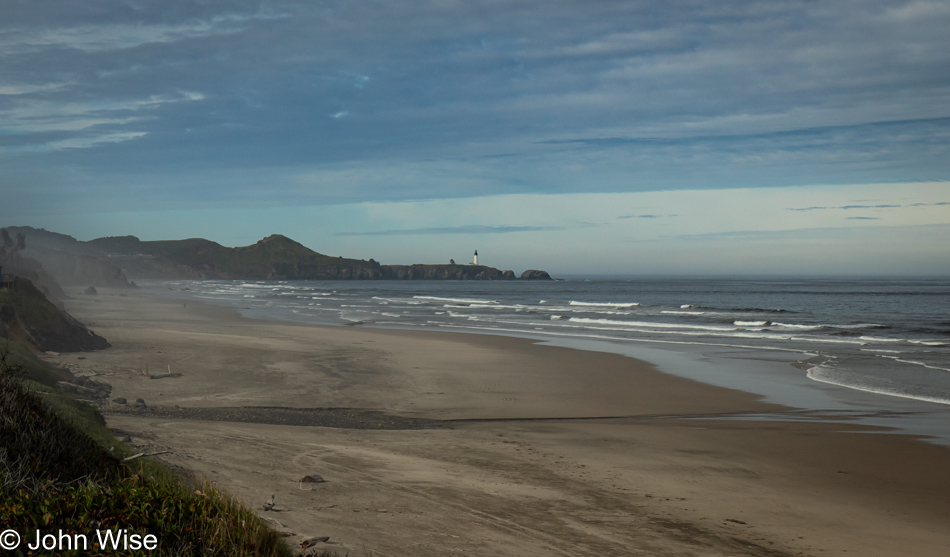
How often have we stopped at the Moolack Beach Overlook gazing south towards Yaquina Head Lighthouse in Newport, Oregon? Countless times is exactly how many. We only have two things in mind today: the first was to get breakfast at Newport Cafe for the Pacific Seafood Scramble, and the second was to visit Darlingtonia State Natural Site in Florence.
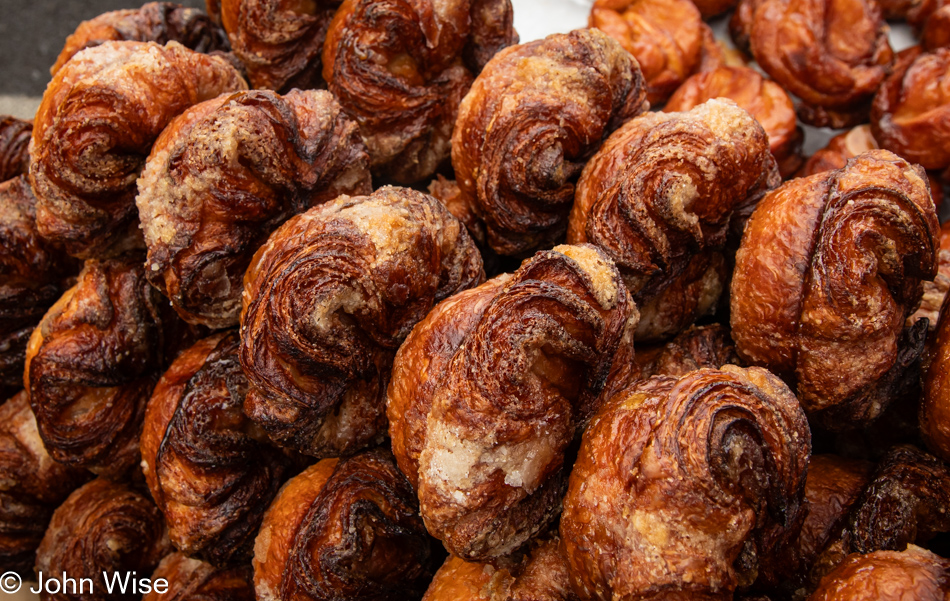
Breakfast was already out of the way when Caroline and I simultaneously spotted the Newport Farmers Market in full swing, and with easy parking available, we were there in a second. The first vendor we spoke with was Frances O’Halloran, owner of LoveJoy Botanicals, who sold Caroline a bottle of Strawberry Rhubarb Rose Shrub, and just before we walked away, she clambered for a bag to show us a purchase she’d made that morning, here at the market, over at How We Roll Bakery. She insisted that we JUST HAD TO go buy some Kouign-Amann (pronounced Queen Ah-Mon). This photo shows those pastries, and they are indeed spectacular. Roy and Jenn are the proprietors of this obviously popular market stand, witnessed by the long line. We were told, or was it warned, that we’d love them just as everyone else has and that maybe two wouldn’t be enough and that soon they’d be sold out. Good thing we were just coming from a big breakfast. Otherwise, I think we could have bought four for each of us and made these the first meal of our day. A laminated pastry with butter, sugar, cardamon, and a ‘hint of salt,’ this couple has perfected their technique.

Our next purchase was from Amy Jilliane Pattison, who makes these Thai Jewel Beetle Wing pendants; Caroline also snagged a sea glass pendant.
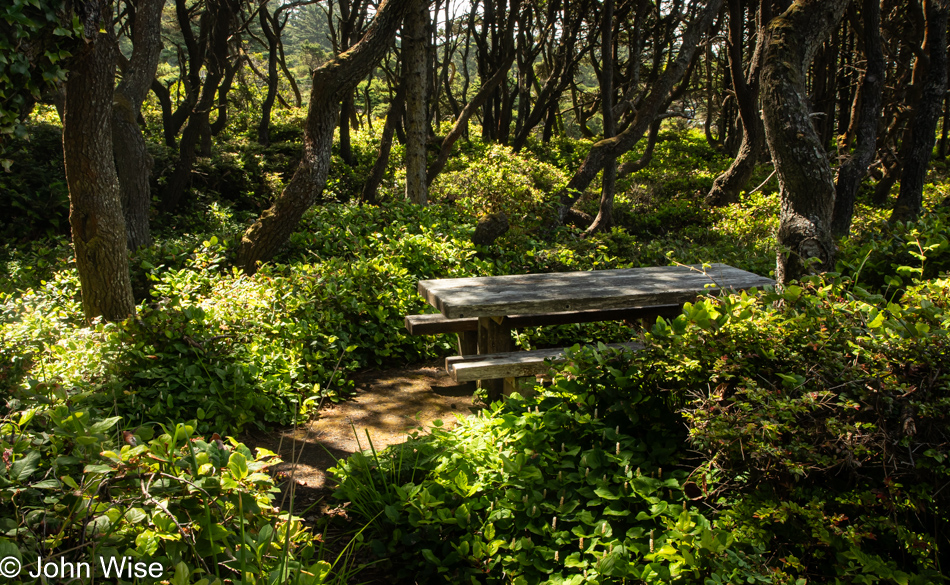
Uncertain if we’d ever stopped at this particular location, Caroline asked me to pull into the Seal Rock State Recreation Site. Without a real plan, that’s where we are, on our way to the overlook.

This mammoth basalt formation, a sea stack called Elephant Rock, appears to have formed between 15-16 million years ago by the Columbia River lava flow. Here are some amazing scientific facts about that event that lasted millions of years. That flow released 105,633 cubic miles (170,000 cubic kilometers) of lava that flowed from eastern Oregon down to the mouth of the Columbia River, where it turned left and traveled more than 100 more miles until reaching this very area right here, Seal Rock, Oregon. To help you visualize just how much lava that was, if it was water covering the entirety of the continental United States, everywhere would be covered with almost 70 feet of water.

I legitimately thought I was done with tide pools; I really don’t have anything left in me to say about tide pools during this visit to coastal Oregon, other than, to my surprise, we arrived at low tide and found more mussels, barnacles, seaweed, small fish, sea stars, and anemones.
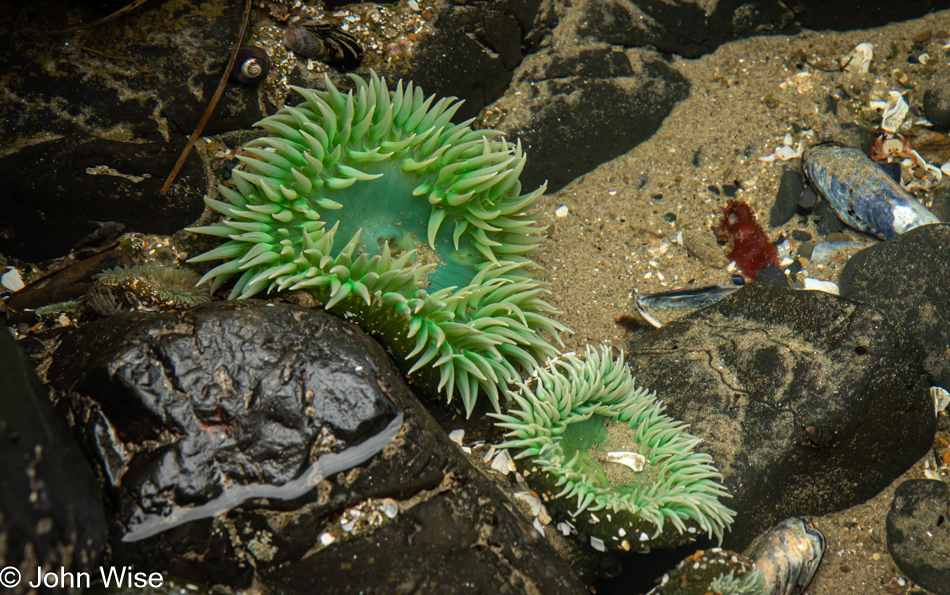
The problem is that I’m compelled to share more photos of it all because, though I’m at a loss of words, we never tire of seeing the intertidal life that lives right next to us humans.
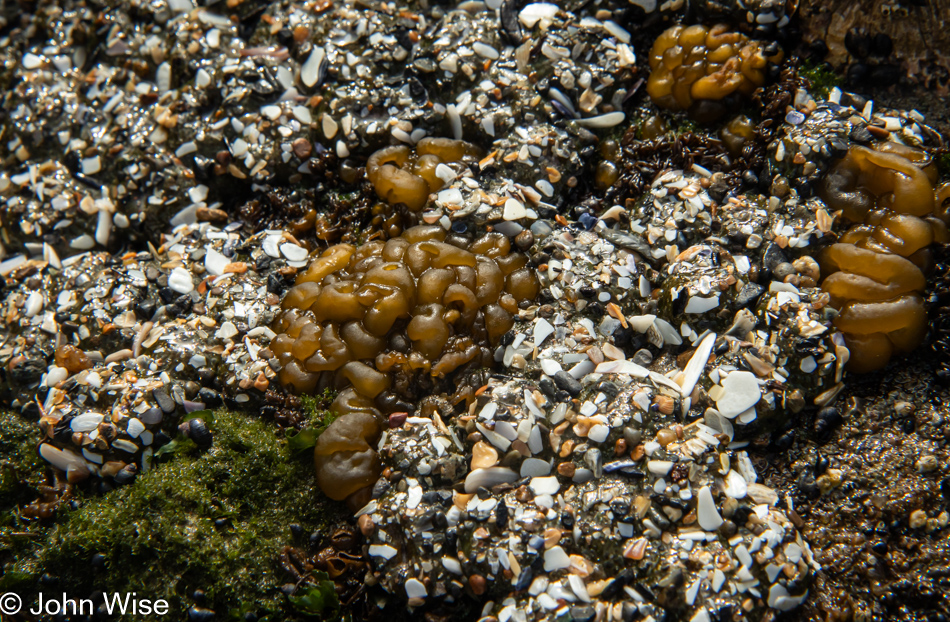
I have no idea what the greenish-brownish brain-like stuff is, but I believe that the shell and pebble collection belongs to anemones that are camouflaged by this debris.
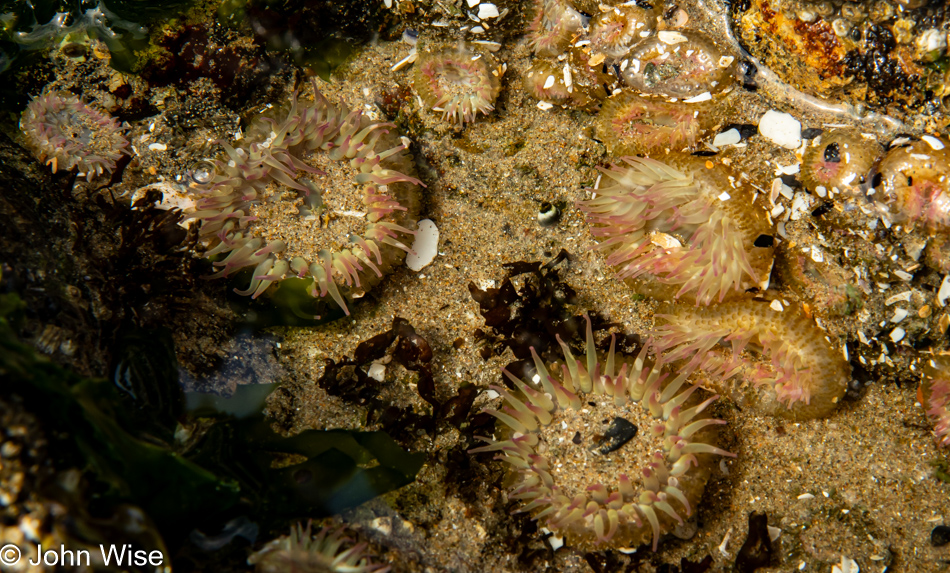
My only excuse for another anemone photo is that these aren’t green.

But the seaweed is green, and the geology is beautiful.

This great blue heron represents a conflict of opinion between Caroline and myself. You see when I have too many photos chosen for a post, I’ll bring my wife over to help prune my overzealous enthusiasm to overshare. In this case, our choices didn’t agree, so I’m sharing her pick first, separating two heron photos by the following beautiful reflection of a fossilized giant shark fin.
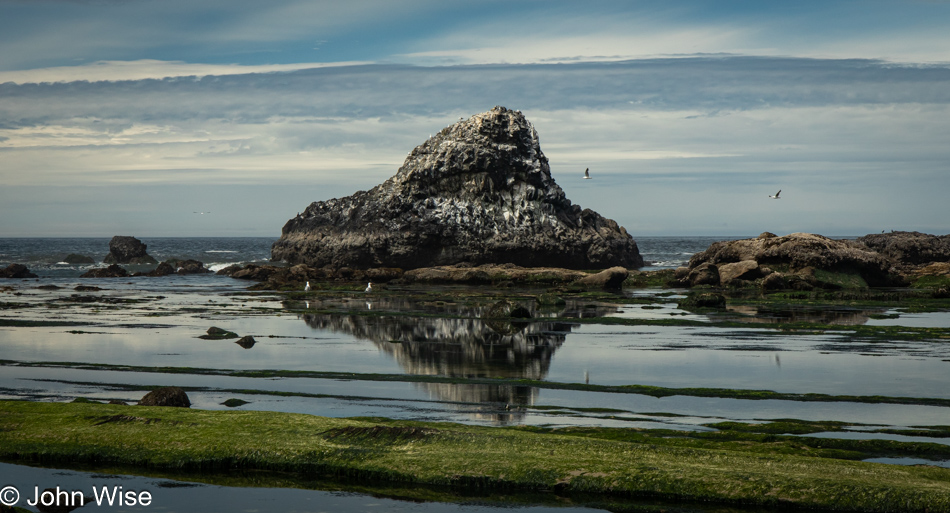
Just kidding about the fossil, but you can see the resemblance, I’m sure.
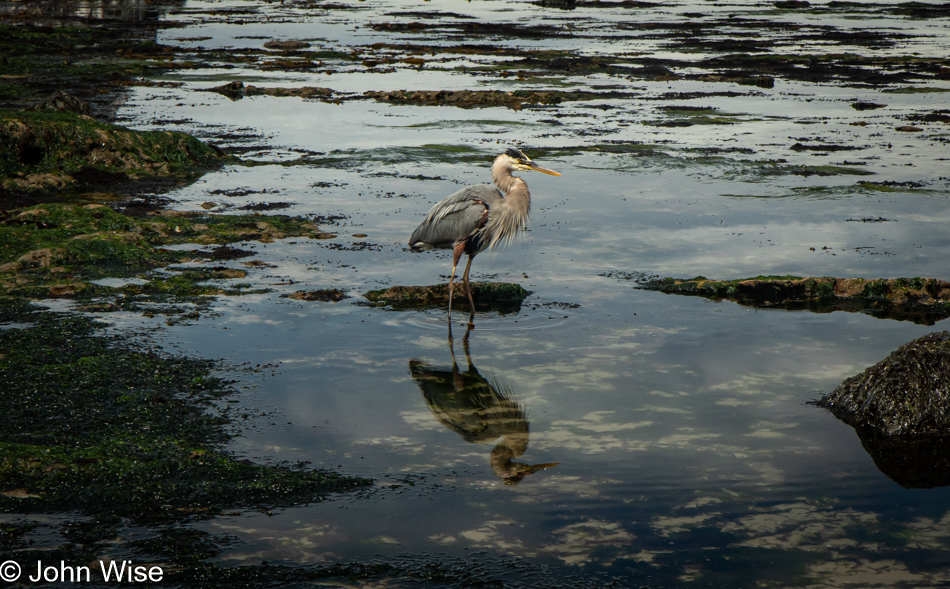
And now the same heron, looking north with ruffled feathers after shaking itself following the eating of a fish.

Still in the Seal Rock area, we couldn’t be certain if we’d ever visited the Driftwood State Park before, so we’ll visit it now, possibly not for the first time.
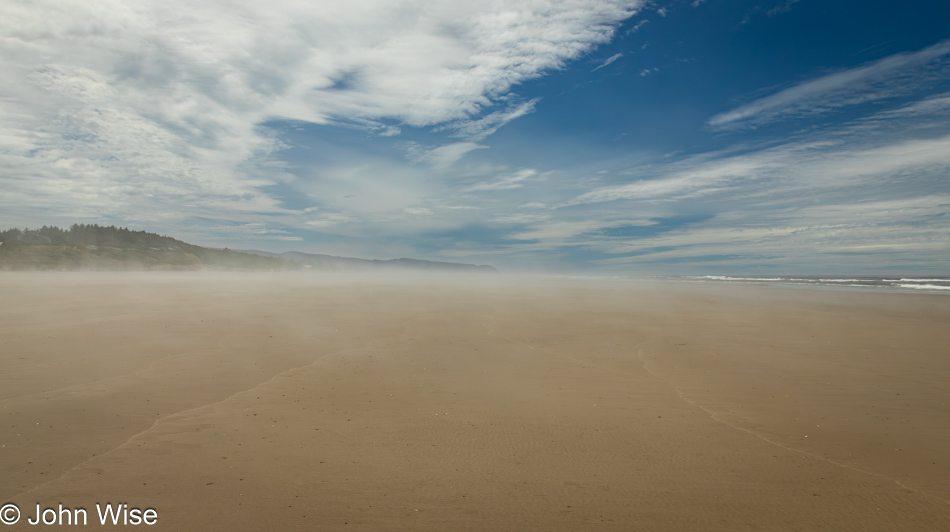
We’ve been smitten by this effect of clouds of steam that are rising out of beach sands. The motion of the moisture floating up is mesmerizing and is better seen on video or, better yet, in person, but this blog is not a vlog, as all this dialogue would move my creations out of TikTok shorts into feature-length films.
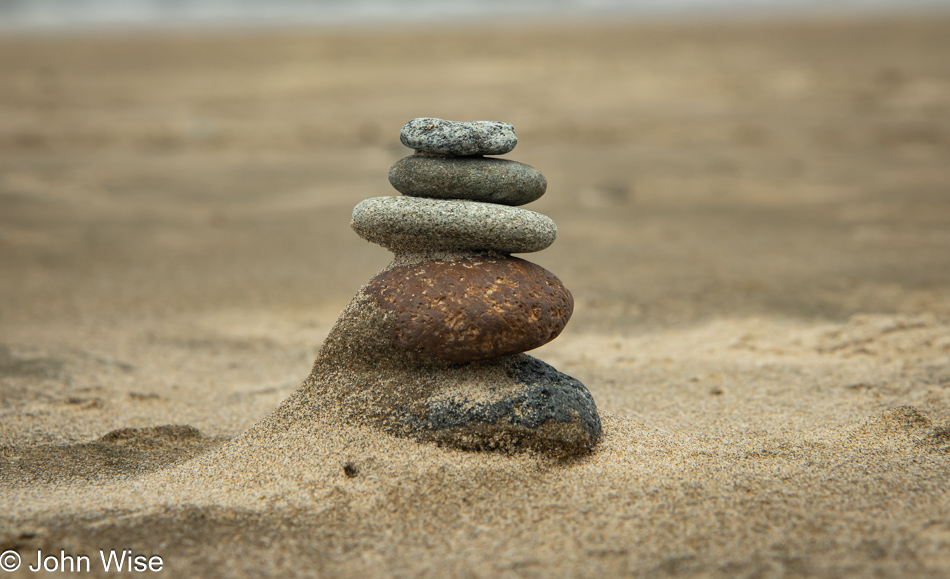
How nice it was for someone to erect this cairn so we wouldn’t lose our way off Driftwood Beach.

For the astute, they might notice I’m looking north, and that’s because I think the views both north and south are tremendous.
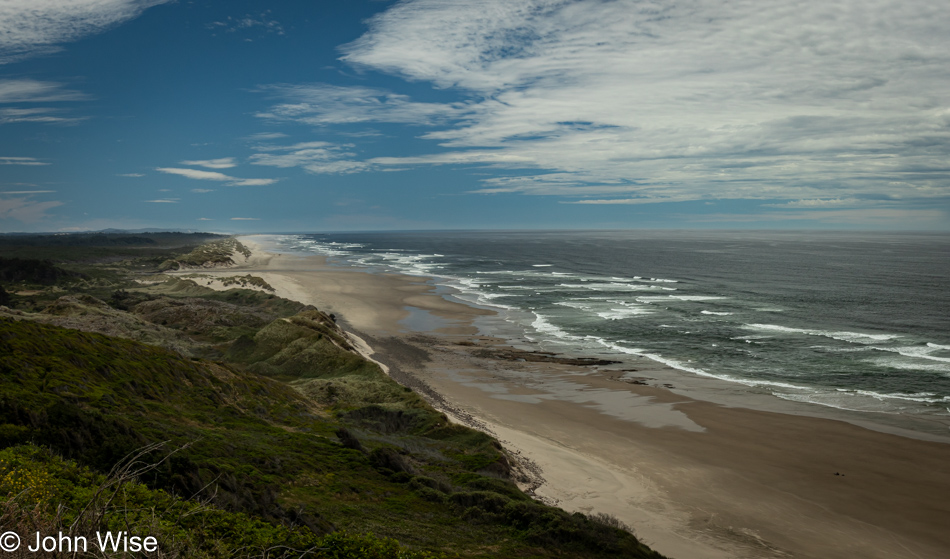
This is the view south from the Pacific Ocean Vista Point pullout, the direction in which we are still traveling.
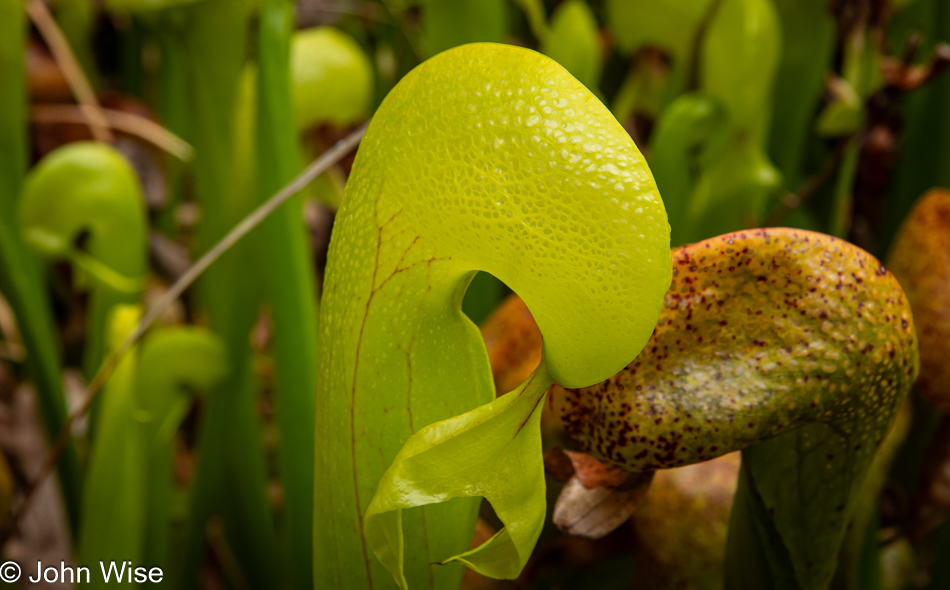
The carnivorous Darlingtonia lays in wait for the next over-rambunctious child to fall into its maw. Do you see those red blood vessels running up the side of it? It’s hungry for an innocent unsuspecting life. Those forked appendages under its monsterish green head act as both a bib and napkin for cleaning up after devouring the next mammal that gets too close.

This is the blooming flower of the Darlingtonia that only does so in May and June, hence why it was so important to make a special trip down this way.

We’ve visited this tiny patch of carnivorous plants previously. They are only found in Northern California and Southern Oregon in bog-like areas.

Growing in the same area were these berry vines. I’d like to identify the variety, but Oregon is chock-a-block full of berry varietals, so I’m not going to even try. What I can tell you is that while they weren’t fully ripe yet, they were tasty.
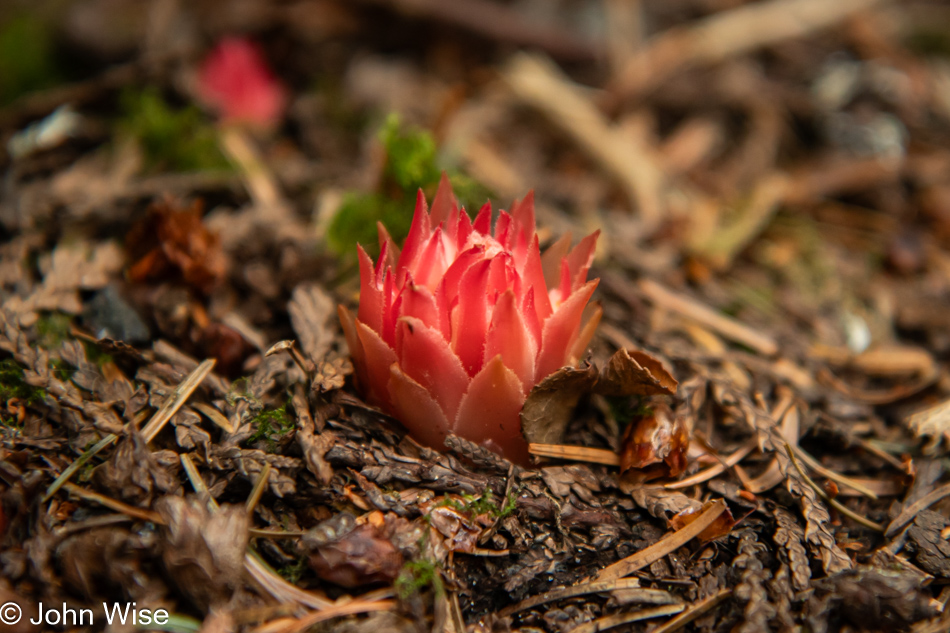
A woman also visiting the Darlingtonias and hanging out for a good long time while others came and went was sharing travel notes with us and asked if we’d seen these things nearby. We’d not, so she showed us where they were, and it turned out that they were a rare find. Their formal name is Hemitomes congestum, with a common name of the gnome plant. In the family of Hemitomes, it is the only member of that branch. Little is known about the gnome plant, and it’s only speculated that its lack of chlorophyll is due to a parasitic relationship with a fungus from which it gathers its nutrients.

The last photo of the day is from Seal Rock Beach, as seen from an overlook. Out there in the sea on the left by the rocks surrounded by water, that’s where we were exploring tide pools and saw the Great Blue Heron. A late lunch/early dinner once again at Ona Restaurant in Yachats and a cold brew in Newport from Dutch Bros were the final activities of another busy Saturday.